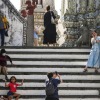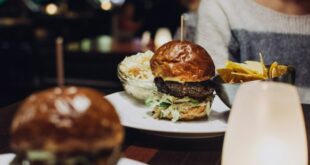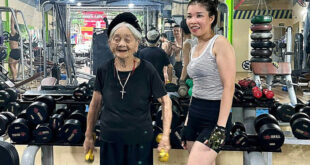“I want to spoil myself, to get beauty treatments to make up for all the missed opportunities during social distancing,” Phan Nguyen Ngoc Nhi says while getting skin rejuvenation treatment at a spa in Hanoi.
Since the last Covid-19 lockdown was lifted late last year, Nhi, 35, and her husband have been going to a spa in Hanoi’s Hoan Kiem District every Saturday afternoon.
While he only gets basic facial treatment, which costs around VND400,000 ($17.47), Nhi has a VND20-million ($875) skin rejuvenation package.
“After the pandemic, I feel like investing more in myself,” Nhi says.
The couple are among more and more people making appointments for facial treatments and others at spas and clinics. After months of going without them since spas were closed, the pent-up demand is fueling a steady recovery of the market.
Twice as busy
At 2 p.m. one Saturday in early April, the two-story Mega Gangnam Clinic in HCMC’s District 1 was packed with customers receiving facial and skin rejuvenation treatments.
With 23 out of 25 beds on the upper floor occupied, the harried employees were providing consultations and treatment recommendations downstairs as new patrons continued to stream in.
At the reception desk, the phone rang constantly, leaving the operator juggling between answering the phone with one hand and clicking the computer mouse with the other to figure out the next available time slot.
“Weekends are our busiest days. We operate at nearly full capacity from 9 a.m. to 5 p.m.,” Huynh Nhat Minh, Mega Gangnam’s marketing director, says.
Shortly after all lockdowns ended last fall, Minh’s clinic was getting 40-50 customers a week. Since the beginning of 2022 the number has doubled to 80-100, with the number of people calling in for inquiries soaring by 150 percent compared to early 2021.
Mega Gangnam is just one of many beauty clinics and spas countrywide that are thriving now.
While the Covid-19 pandemic forced many smaller ones out of business, those with deeper pockets have managed to stay afloat and even grow.
Mega Gangnam, for instance, which had a clinic each in Hanoi and HCMC, has opened two more branches, one in HCMC’s District 10 and one in Da Nang City.
Most are seeing significant increases in bookings and consultations for both surgical and non-surgical treatments, heralding a strong recovery by the industry.
According to Nguyen Minh Tam, an employee at a clinic on Nguyen Van Troi Street in HCMC’s Phu Nhuan District, on Saturday mornings all 50 beds at his place are occupied with people coming for liposuction and skin laser treatments.
“Since the fourth wave of the pandemic we have lost seven employees who went back to their hometowns and did not return, and so we are in a rush to hire new staff to fill their spots and meet the rise in demand.”
According to many spa and clinic owners, the biggest demand is for facial treatments, skin whitening and Botox injections at prices ranging from a couple to tens of millions of dong (VND10 million = $430).
Customers are of all ages and from all walks of life, including men who are increasingly seeking to improve their looks.
“After the Lunar New Year some men visited our clinic for liposuction to get the best appearance before returning to work,” Tam says. The procedure costs VND1.9 million ($83).
In recent years, with one of the fastest growing middle classes in Southeast Asia and rising disposable incomes plus heightened consciousness about good looks, Vietnam has become a promising market for beauty and personal care services and products.
According to the Vietnam Society of Aesthetic Plastic Surgery, the country has dozens of plastic surgery hospitals and departments within hospitals, hundreds of dermatology and plastic surgery clinics and thousands of skin care businesses.
German market and consumer data company Statista’s report titled Consumer Market Outlook says the Vietnamese beauty and personal care market was worth $2.1 billion in 2020 with the three leading segments being personal care, skin care and cosmetics.
This was despite a slight slump in 2020 because of the pandemic, and Statista forecasts the market will grow again as consumers regain confidence about spending and estimates revenues to reach $2.8 billion by 2024.
This positive outlook for the country’s beauty market is part of a wider strong post-pandemic rebound expected globally.
According to U.S. nonprofit The Global Wellness Institute (GWI), beauty and personal care is the biggest segment in the $4.4-trillion global wellness industry, which grew by 6.6 percent a year between 2017 and 2019, and is projected to grow at 9.9 percent a year in 2020-25.
Of all the major regions, Asia-Pacific has been least affected by the pandemic.
According to GWI’s ‘The Global Wellness Economy: Country Rankings, February 2022’ report, Vietnam’s wellness industry was worth $16.7 billion in 2020 to rank 33rd out of 150 economies.
Renewed confidence
For consumers like Nguyen Ngoc Diep of HCMC’s District 3, since the fourth wave of the pandemic subsided, spending money to pamper their bodies and looks has again become an option.
Many people have returned to work, regained some financial stability and are willing to spend again.
For the past few months, Diep, 32, a real estate agent who did not have good business last year, has found new clients and feels confident about spending on her looks now.
She says: “Last year I was jobless. Now I can work again and don’t mind spending VND3 million ($131) every month to spruce up my appearance.”
Luu Thu Hoai, PR manager of luxury spa Lavender By Chang, which has a branch each in Hanoi and HCMC, agrees.
“People can make money and are willing to spend again.”
She points out that beauty services are always in demand among upper-class customers, especially wealthy married women.
According to some spa owners, many middle- and upper-class patrons were not severely hit by the pandemic and have simply resumed their usual levels of spending.
Tam says another reason for the post-pandemic surge in beauty demand is that many some families with unvaccinated children have not yet resumed travelling during holidays and consequently have both more time and money to spend on beauty services.
Though the beauty business is steadily returning to normal, the pandemic has left some lasting impacts. For instance, since the threat of Covid remains, many beauty salons adopt strict safety measures to reassure their clients.
Lavender By Chang disinfects its premises twice a day, while Mega Gangnam’s four spas have their beds spaced more widely apart to maintain social distance.
“All our staff wear masks and we disinfect every nook and corner once a day,” Minh says.
“We are strict when it comes to Covid prevention, so our patrons feel safe about using our services.”
With the pandemic winding down in Vietnam and the number of severe cases and deaths falling amid a high vaccination rate, Diep is among those who feel confident to return to their favorite beauty places.
Diep, who goes a spa with her mother every other weekend, says: “I’m fully vaccinated and things are returning to normal, so I’m not worried about the pandemic anymore.”
- Reduce Hair Loss with PURA D’OR Gold Label Shampoo
- Castor Oil Has Made a “Huge” Difference With Hair and Brow Growth
- Excessive hair loss in men: Signs of illness that cannot be subjective
- Dịch Vụ SEO Website ở Los Angeles, CA: đưa trang web doanh nghiệp bạn lên top Google
- Nails Salon Sierra Madre
 VnExpress News The News Gateway of Vietnam
VnExpress News The News Gateway of Vietnam





